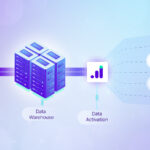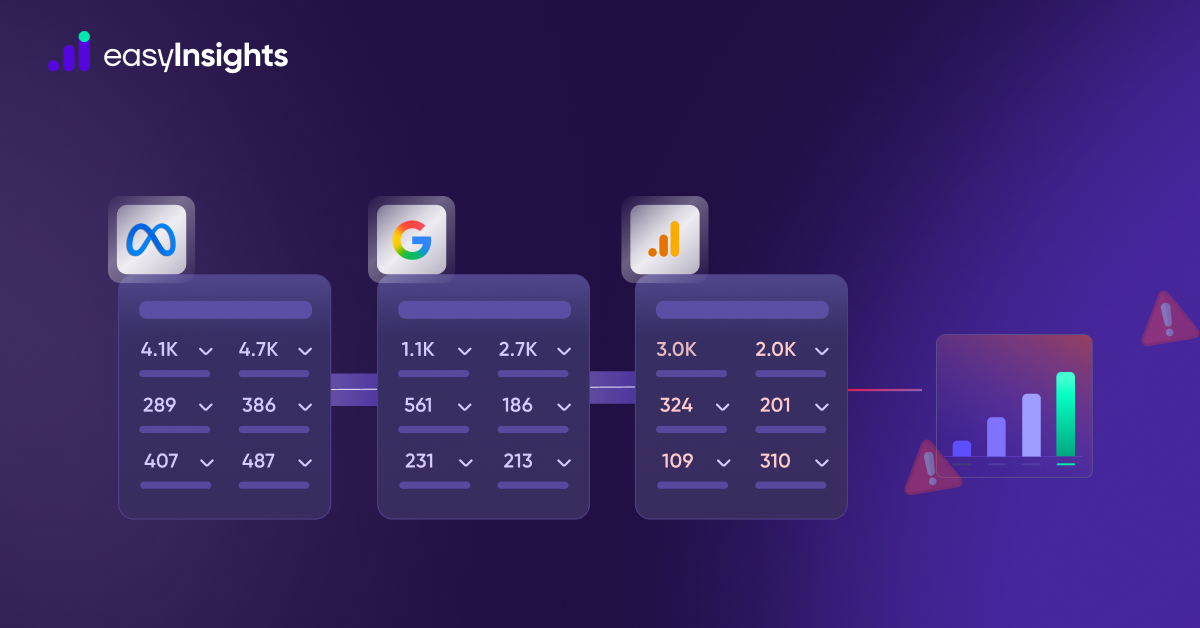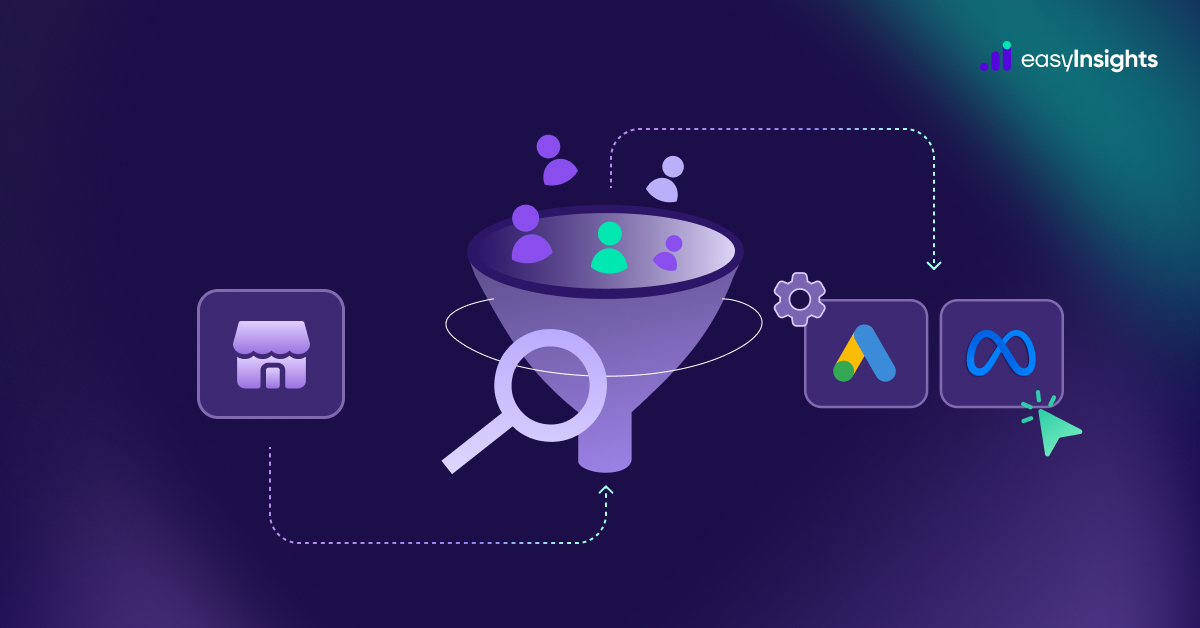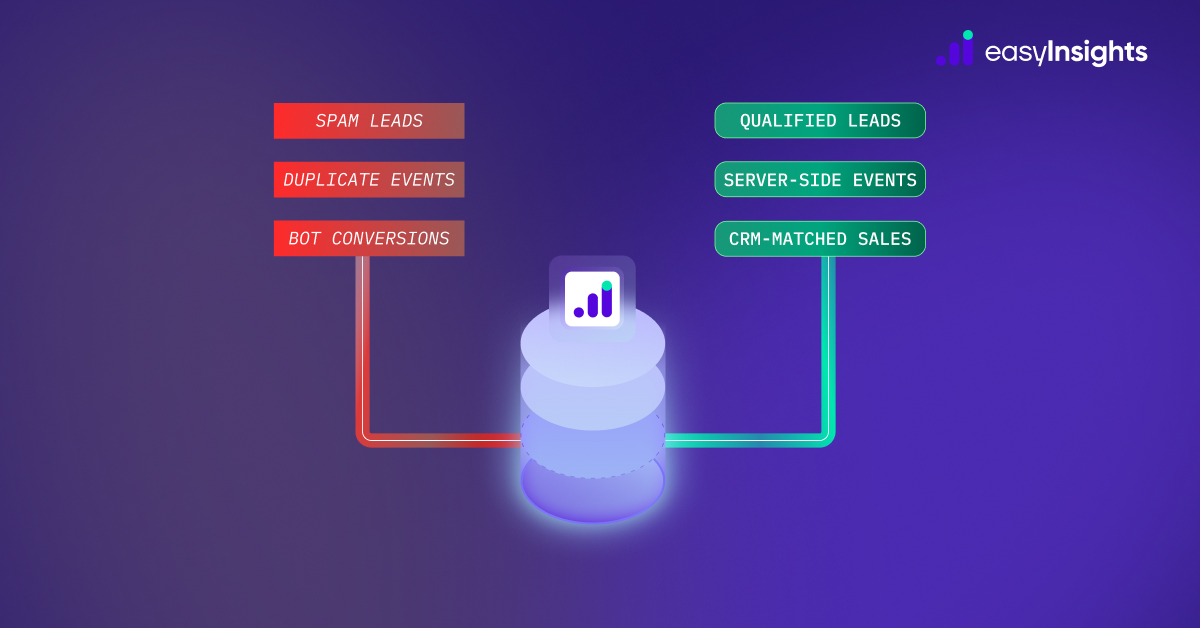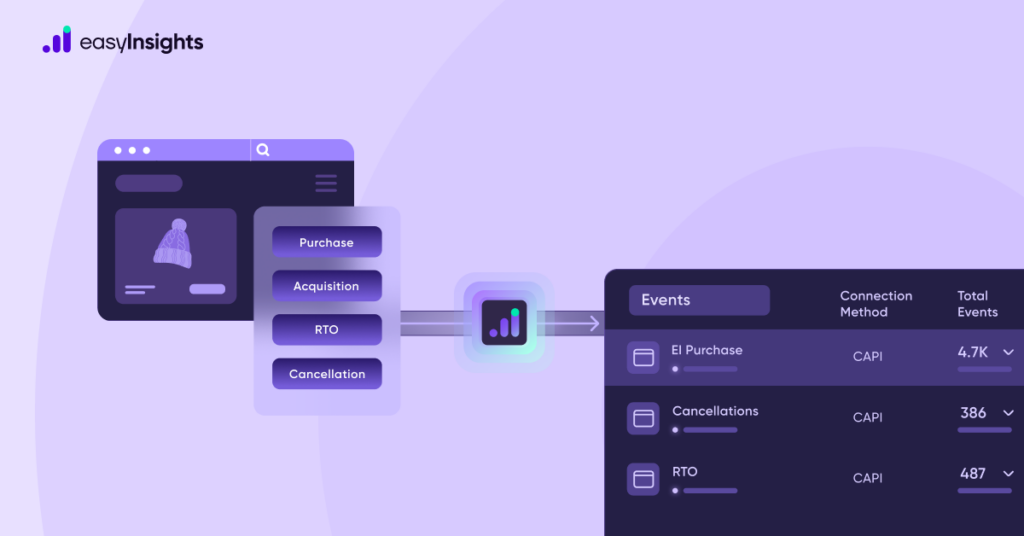
Meta and other ad platforms, use a continuous feedback loop to optimize ad delivery. They start by showing your ads to a small group of users and then analyze the results. Based on this performance, they strategically select the next group of users to target.
Essentially, these platforms rely on success signals you provide – the events you send them – to inform their bidding strategy for future impressions and clicks.
As highlighted by Meta’s recent advancements, the ability to define specific business outcomes and accurately measure success is paramount. By leveraging proprietary customer information, businesses can precisely communicate their Key Performance Indicators (KPIs) to platforms, enabling advanced optimization features like Value Optimization and Incremental Attribution to deliver demonstrably higher returns on ad spend (ROAS) and drive more meaningful business outcomes.
This is precisely why first-party events are so crucial. With growing privacy regulations and restricted access to third-party data, ad platforms are increasingly dependent on the direct signals you send from your website or app. Events like purchases, acquisitions, or other key actions are the most accurate and reliable way for these networks to understand what success means for your business. Without them, platforms are left to optimize with less effective proxy signals like clicks or time on site, which often leads to subpar performance.
Choosing the right success signal is one of the most significant factors in today’s advertising landscape. We’ve seen instances where customer acquisition costs (CAC) were slashed by 40% simply by optimizing for a more meaningful first-party event.
Jump ahead to:
Marketers as AI Signal Providers
Marketing is evolving; it’s now about feeding the best signals to AI for optimal performance. You need a robust process for providing these signals effectively.
Here are the best practices for selecting the ideal event for your paid social and paid search campaigns:
1. Choose an Event Occurring Within 1-7 Days of a Click
Think of machine learning models as rapid learners that need clear, consistent feedback. These models are constantly refining their targeting based on the signals they receive. If you provide vague or delayed data, they’ll optimize incorrectly, wasting your budget on irrelevant users. Ideally, select an event that happens within 1 to 7 days of the initial click.
2. Send an event that fires at least 50 times / week.
You’ll want to send an event that fires at least 50 times a week. This ensures the AI gets enough data to learn effectively, while still indicating a high-value conversion.
For example, if you’re scaling your business, optimizing for an “Acquisition” might be better than just a “Purchase”. Your goal is to find the earliest, highest-volume event that reliably predicts a profitable customer, enabling the AI to scale customer acquisition efficiently. However, if your signal volume is too low (less than 50 events per week), the AI may struggle to accurately fine-tune your campaigns.
Does event optimization work in D2C?
Absolutely! We’ve seen significant success on Meta and Google using event optimization to reduce customer acquisition costs (CAC) and bring in a higher-value pipeline for D2C.
The most common events in D2C are purchase and acquisition.
How Meta process event data received via CAPI
Meta’s Last Touch model assigns 100% credit for a conversion to the last interaction – whether a click, a visit, or even just an ad impression – depending on what happened most recently
Specifically, in Meta’s terminology, the Last Click or Visit model gives full credit to the most recent click or visit in the conversion path
And, according to Meta’s business documentation, the Last Touch model is the default attribution model in Facebook Ads reporting
For Example: You send a Purchase event via CAPI:
- event_time: July 1, 2025, 12:00 PM
Meta matches the user and checks their ad interaction history:
- User clicked on an ad from Campaign A on June 28, 2025, 2:00 PM
Since the click is within the 7-day click attribution window, Meta attributes the purchase to Campaign A.
If the user had viewed or clicked an ad instead on June 28, and you’re using a 1-day view window, the purchase would not be attributed, since it’s 3 days later.
Attribution Hierarchy (if multiple ads match)
If more than one ad falls within the attribution window, Meta uses a last-touch model by default:
- Last Click takes priority over views.
- If multiple clicks exist, the most recent click wins.
- If no clicks, then the most recent view.
For example, if a user:
- Views Ad A
- Clicks Ad B
- Views Ad C
- Then converts
Meta attributes the conversion to Ad B, because that was the last click, even though they viewed Ad C more recently
Where You Configure Attribution Windows
- In Meta Ads Manager: During campaign creation – “Attribution Setting”
- Business-wide default settings are also in:
Meta Events Manager and Meta Business Suite
How to shift your existing events to EI events
Custom events are often newer and have less history. Help the ad platforms “learn” by:
- Keeping the custom event volume high (at least 50 conversions/week per ad set ideally)
- Not making rapid changes to the campaign too soon
Start with a Split Test (A/B Testing)
Set up a controlled test:
- Campaign A: Optimizes for your current standard event (e.g., “Pixel based Purchase event”)
- Campaign B: Optimizes for the new custom event (e.g. EI powered Purchase event)
Keep everything else identical – audience, creative, budget. Run the test for 7–14 days, or until you have enough data to compare ROAS and business metrics.
Gradually Scale Winning Campaign
If Campaign B (custom event) performs well or shows promise:
- Start shifting 20 – 30% of the budget from the standard campaign to the custom one
- Monitor performance daily (not just CTRs, but ROAS and backend metrics like Acquisitions etc.)
If it’s stable or improving, continue shifting more budget weekly.
Meta Recommends: Power Advantage+ Shopping Campaigns with First-Party Events
If you’re running an e-commerce brand, Meta’s Advantage+ Shopping Campaigns offer one of the fastest ways to scale. These campaigns apply Meta’s best practices automatically, and brands have seen up to 32% higher ROAS and 17% lower cost per conversion when using them effectively.
But Meta also highlights a key point: first-party events are essential to getting the most out of Advantage+.
In today’s privacy-focused world, Meta relies more on the data you collect directly from your store. Events like purchases, add-to-cart actions, product views, and custom milestones help the system understand which users are most likely to convert and what matters most to your business.
Meta’s key recommendations for e-commerce:
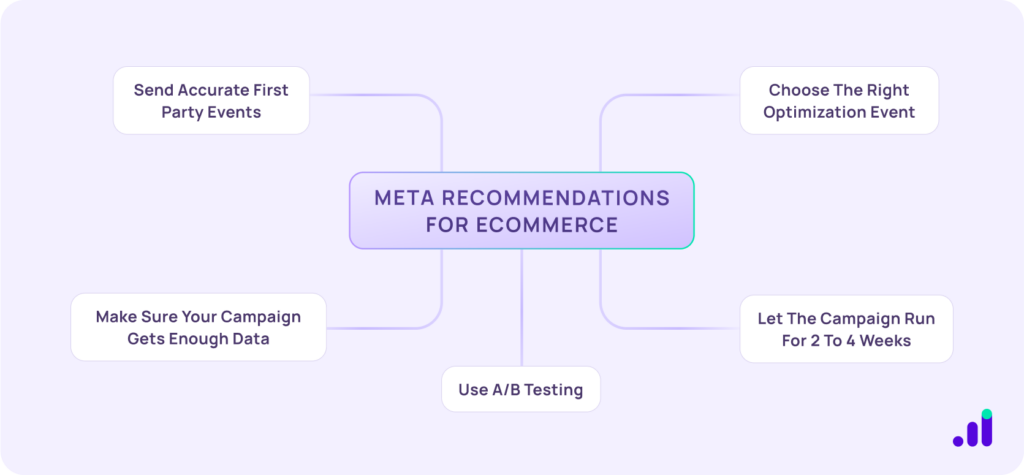
- Send accurate first-party events through the Meta Pixel or Conversions API. EasyInsights can help you ensure that purchase and cart data are clean, consistent, and real-time.
- Choose the right optimization event. Don’t settle for generic signals like “Purchase” if they don’t match your true business goals. Consider events like “Acquisition”, “High-Value Purchase” or “Repeat Buyer” if they better reflect customer quality.
- Make sure your campaign gets enough data. Meta recommends at least 50 conversions per week on your selected optimization event to exit the learning phase.
- Let the campaign run for 2 to 4 weeks without major changes to give the system time to optimize.
- Use A/B testing to compare performance between standard events and more advanced custom events powered by your first-party data.
Why this matters:
Meta’s automation works best when it receives clear, high-quality signals. Without strong first-party data, even the smartest algorithm is forced to guess. On the other hand, e-commerce brands that send well-structured, meaningful events consistently get better targeting, higher-quality customers, and stronger ROAS.
Meta is clear. The future of performance marketing for e-commerce is automated and driven by the signals you own. Combining Advantage+ Shopping Campaigns with first-party data is no longer optional – it’s a competitive advantage.
Additional reading: How to make ASC Campaigns more efficient
Why the Acquisition Event Is a Goldmine for E-Commerce Brands
For e-commerce brands, the acquisition event (usually a first purchase) is one of the most valuable signals you can send to Meta. It marks the moment when a shopper becomes a customer and proves that your product, pricing, and brand can convert intent into revenue.
Meta’s algorithm is designed to optimize toward success. When you send a clean, first-party purchase event as your acquisition signal, you help the platform learn who your real buyers are and find more people like them.
Here’s why the acquisition event is critical for e-commerce growth:
- It’s your highest-quality conversion signal
Not all clicks or add-to-carts mean someone is serious. A completed purchase tells Meta exactly what kind of user converts and gives the system a clear direction. - It improves Advantage+ Shopping Campaigns
Meta’s automation thrives on reliable purchase data. If you’re optimizing for the first purchase instead of lower-funnel signals like add-to-cart, Advantage+ can scale more effectively and deliver stronger ROAS. - It drives better acquisition quality
Optimizing for the acquisition event reduces wasted spend on window shoppers and focuses your budget on users with high intent and purchase readiness.
Pro Tip
Use EasyInsights to track and enrich your acquisition event with additional context like product category, Purchase Value, UTM source, or whether it was a bundle or single-item purchase. This enhanced first-party data helps Meta get smarter about who to acquire and what to promote.
For e-commerce brands, the first purchase event isn’t just a conversion. It’s your strongest optimization signal. When used correctly, it helps Meta focus your ad spend on the users most likely to buy, improving performance and driving scalable growth.
Why Pixel-Based Events Often Over or Under-Report (and Why CAPI Fixes That)
If you’re relying only on the Meta Pixel to track performance, chances are your data isn’t telling the full story. You might see over-reporting (where Meta attributes conversions that didn’t happen) or under-reporting (where real conversions are missed entirely). Here’s why this happens – and how Meta’s Conversions API (CAPI) solves it.
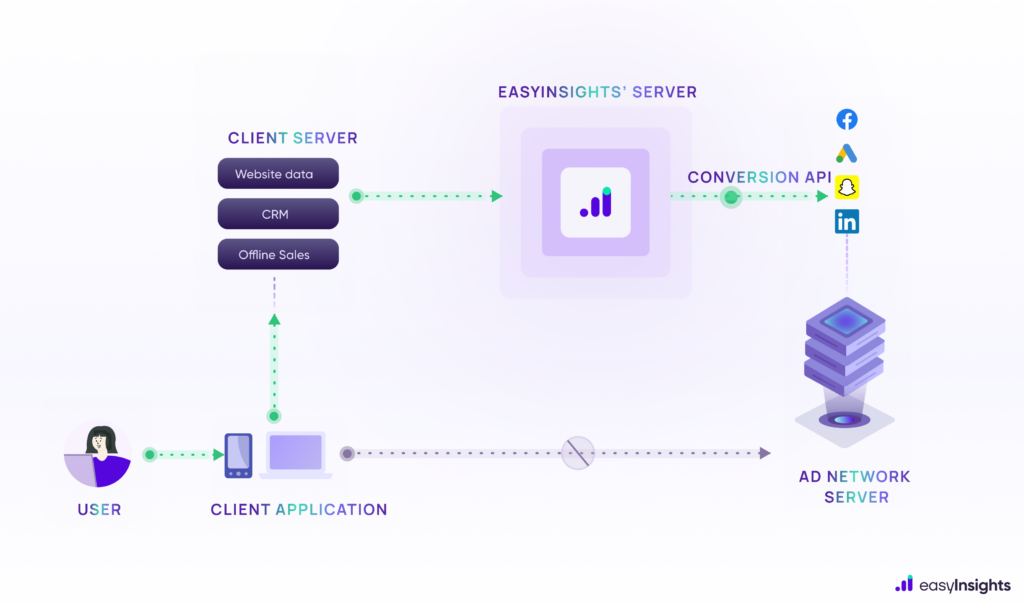
Why Pixel Tracking Isn’t Always Reliable:
- Ad blockers and browser restrictions
Many users now have ad blockers or browsers like Safari that block third-party tracking cookies. This means your Pixel can’t fire – even if someone purchases on your site. That leads to under-reporting. - Slow network or page load issues
If a page loads slowly or a user bounces quickly, the Pixel event might not fire in time. Again, this means lost data and missed conversions. - Duplicate firing or misfiring
In some cases, if your Pixel is set up incorrectly or fires multiple times on one page, it can over-report conversions. Meta may think multiple purchases occurred when there was only one. - No server-side validation
Pixel events rely entirely on the user’s browser. There’s no way for Meta to confirm if a reported event is real or just a technical glitch.
Why CAPI Delivers More Accurate, Powerful Tracking
Meta created Conversions API (CAPI) to solve all of this. Instead of relying on the user’s browser, CAPI sends events directly from your server to Meta’s – making them more reliable, complete, and secure.
Here’s how CAPI improves accuracy and performance:
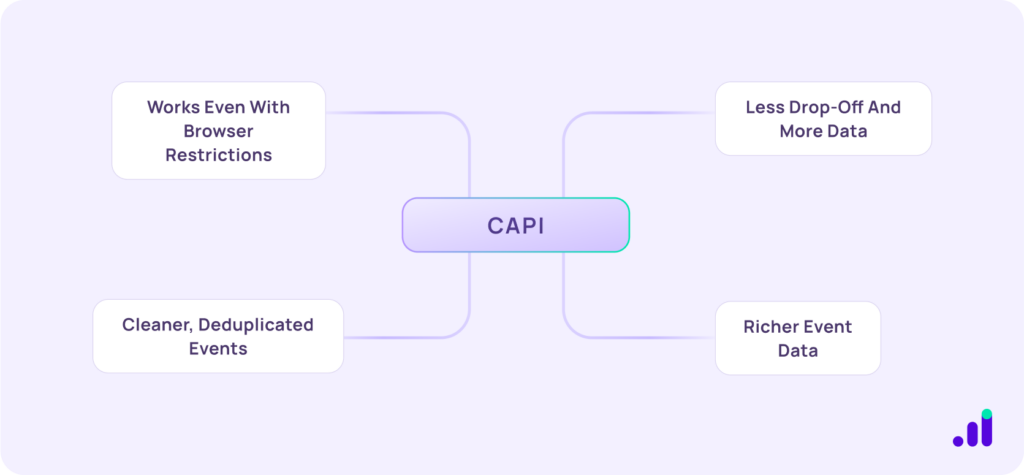
- Works even with browser restrictions
Because CAPI runs server-side, it’s not blocked by iOS updates, Safari, Firefox, or ad blockers. Your conversion data gets through every time. - Less drop-off and more data
Since CAPI doesn’t rely on user-side loading or interaction, it captures events even if someone leaves a page quickly or has a poor connection. - Cleaner, deduplicated events
When set up correctly (using both Pixel + CAPI with deduplication), Meta ensures events aren’t double-counted – giving you cleaner attribution. - Richer event data
With CAPI, you can send extra details that aren’t available to the Pixel — like product IDs, user email/phone (hashed), order value, and custom actions. This makes your optimization signals far more powerful.
Why It Matters for Your Business
If Meta doesn’t get clean, reliable data, it can’t optimize properly. That means worse targeting, higher CAC, and poor campaign performance. Switching to (or augmenting with) CAPI gives Meta the visibility it needs to actually help you grow.
Platforms like EasyInsights make it easy to set up and manage CAPI without dev headaches, ensuring you’re sending the right data – accurately, securely, and in real time.
Want to Use GA4 Integration with Meta? You Absolutely Can
If your team is already using Google Analytics 4 (GA4) for event tracking and wants to send that data to Meta, you absolutely can – and there are two ways to do it:
Option 1: Send Events to Meta Directly via EasyInsights
EasyInsights can take all your key events (like Purchase, Acquisition, RTO, Cancellation etc.) and send them directly to Meta’s Conversions API (CAPI) – in real time, with:
- Clean, deduplicated events
- Enriched user and product data
- Full control over what Meta receives
This gives you maximum accuracy and speed, and works beautifully with Meta’s optimization algorithms.
Option 2: Send Events to GA4 – Sync with Meta
If your brand already pushes events into GA4, and you prefer using Meta’s GA4 integration, that’s also 100% doable.
Here’s how it works:
- EasyInsights helps you clean, enrich, and structure your event data
- It then sends those events into GA4
- From GA4, you can set up Meta’s native integration to pull those events into CAPI
This route works well if you already use GA4 as your source of truth and want to centralize your event tracking in one place.
Conclusion:
In today’s privacy-conscious, signal-dependent advertising landscape, success hinges on how effectively you communicate with ad platforms like Meta. The most powerful way to do that? First-party event data. From enabling advanced optimization techniques like Value Optimization and Incremental Attribution, to fueling automated campaign formats like Advantage+ Shopping, high-quality, timely, and high-volume events are now the lifeblood of performance marketing.
Whether you’re focused on reducing customer acquisition costs or scaling your e-commerce business, the ability to choose and send the right success signals – especially events like “Acquisition”, can dramatically improve your ROAS. Platforms like Meta are built to optimize, but only as well as the data they receive. That’s why using tools like Conversions API (CAPI), integrating with GA4, and leveraging partners like EasyInsights is no longer a luxury – it’s a necessity.
The future of advertising is not just about creativity or copy. It’s about feeding clean, meaningful, and high-frequency signals into the machine, and letting AI do what it does best. Marketers today aren’t just storytellers; they’re signal architects. And those who master this will lead the next wave of digital growth.
To know more Book a demo Today!



